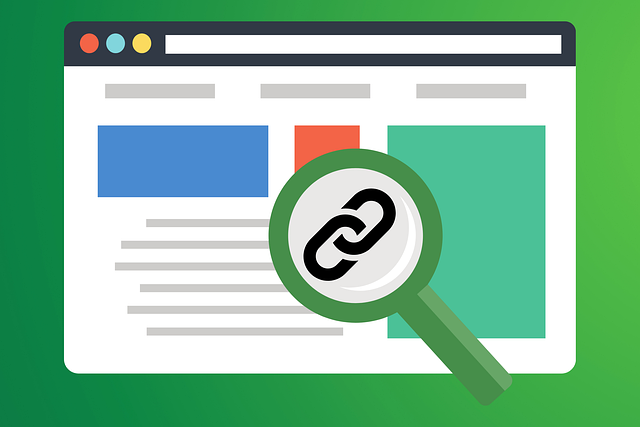Strategic internal linking on WordPress sites boosts SEO by guiding users to relevant content and signaling search engines of well-structured authority. Using descriptive anchor text, natural link flow, high-quality content, and tools like Yoast SEO and Ahrefs optimizes site architecture, improves user experience, increases click-through rates, and enhances overall SEO performance.
“Unleash your website’s full potential with a strategic approach to internal linking, a powerful tool in the SEO arsenal. This article guides you through the intricacies of internal linking for SEO, focusing on WordPress platforms. We’ll explore why these keywords are essential, offering practical tips to optimize landing pages and boost rankings. Discover top tools tailored for effective link building and learn strategies to enhance user experience. Additionally, we’ll delve into measuring success by analyzing internal link data.”
- Understanding Internal Linking for SEO
- Why WordPress Needs Transactional Keywords
- Optimizing Landing Pages for Better Rankings
- Effective Tools for Internal Link Building
- Strategies to Enhance User Experience with Links
- Measuring Success: Analyzing Internal Link Data
Understanding Internal Linking for SEO

Internal linking plays a pivotal role in enhancing your website’s search engine optimization (SEO) strategy, especially on platforms like WordPress. It involves creating strategic links between pages within your site, which helps both users and search engines understand the relationships between different content pieces. By effectively implementing internal linking for SEO optimization, you guide users through relevant content and signal to search algorithms that your site is well-structured and worthy of higher rankings.
This process goes beyond simply adding links; it’s about creating a seamless navigation experience while improving your website’s authority. An internal linking tutorial would highlight best practices such as using anchor text that accurately represents the linked page, ensuring a natural flow of links, and focusing on relevant, high-quality content. This holistic approach to internal linking for SEO in WordPress can significantly boost your site’s visibility and performance on search engine results pages (SERPs).
Why WordPress Needs Transactional Keywords

WordPress, as a leading content management system, plays a pivotal role in website creation and management. However, to optimize its potential, especially for search engine optimization (SEO), implementing strategic internal linking is essential. Transactional keywords are a powerful tool in this regard, offering a unique opportunity to enhance the user experience while boosting SEO for WordPress sites.
By incorporating relevant transactional keywords into landing pages promoting tools for internal linking, website owners can provide valuable context to both users and search engines. This approach ensures that when visitors land on these pages, they are greeted with content tailored to their specific needs—in this case, learning how to leverage internal linking effectively. For instance, a tutorial or guide focused on “internal linking for SEO tips” directly addresses the user’s intent, making it easier for search algorithms to understand and index the site’s structure, thereby improving overall SEO performance.
Optimizing Landing Pages for Better Rankings

To optimize landing pages for better rankings, especially on WordPress sites leveraging internal linking for SEO, it’s crucial to understand how each element contributes to search engine visibility. First, ensure your pages load quickly and are mobile-friendly, as Google prioritizes user experience in its ranking algorithms. This means using optimized images, minimal scripts, and a clean layout.
Next, focus on creating high-quality content that incorporates relevant keywords naturally. Use headings (H1-H6) to structure your content and make it easier for both users and search engines to navigate. Internal linking for SEO strategy should be intuitive—link to related pages within your site to enhance user experience and give search engines clear context for your content. Consider a sitemap to help search engines understand the hierarchy of your site, and don’t forget to optimize meta titles and descriptions for each page, as these directly impact click-through rates.
Effective Tools for Internal Link Building

Internal linking is a powerful strategy to boost your WordPress site’s SEO. Effective tools like Yoast SEO and Ahrefs help identify relevant internal links, ensuring your pages connect for better search engine understanding. By integrating these tools, you can uncover valuable insights into your site’s architecture, revealing content gaps and opportunities for optimization.
For instance, Yoast SEO’s contextual linking suggestions guide you in placing strategic links within your content, while Ahrefs’ backlink analysis allows you to see how competitors are interconnecting their pages. Combining such tools with WordPress plugins designed for internal linking can significantly enhance your SEO efforts, ensuring your site navigates smoothly and ranks higher in search results.
Strategies to Enhance User Experience with Links

To enhance user experience with links on your WordPress site, consider implementing strategic internal linking practices. Start by identifying relevant content within your site and using anchor text that accurately represents the linked page’s content. This not only benefits users by providing clear context but also helps search engines understand the relationship between pages, strengthening your site’s SEO optimization.
Additionally, use a logical structure for your internal links, ensuring they are easily navigable and complement your overall SEO strategy. Tools designed for WordPress can assist in identifying opportunities to interlink content effectively, improving both user engagement and search engine visibility. For a comprehensive guide, check out an internal linking tutorial tailored for WordPress users, which will walk you through the process step-by-step, ensuring optimal SEO results.
Measuring Success: Analyzing Internal Link Data

Measuring success is a crucial step in optimizing your website’s internal linking strategy, especially when utilizing tools tailored for WordPress. By analyzing data related to internal links, you can gain valuable insights into how users navigate your site and identify areas for improvement. SEO professionals often refer to this process as tracking the ROI (return on investment) of your internal linking efforts.
One effective way to measure success is by examining link click-through rates (CTRs). High CTRs indicate that your internal links are engaging and relevant to users, encouraging them to explore more pages. Additionally, keeping an eye on user behavior metrics, such as bounce rates and time spent on page, can help you understand the quality of traffic flowing through your site’s internal links. This data will guide your SEO strategy, allowing you to create a more user-friendly and search engine-optimized WordPress website through the strategic optimization of internal linking for SEO, as illustrated in this internal linking for SEO tutorial.
